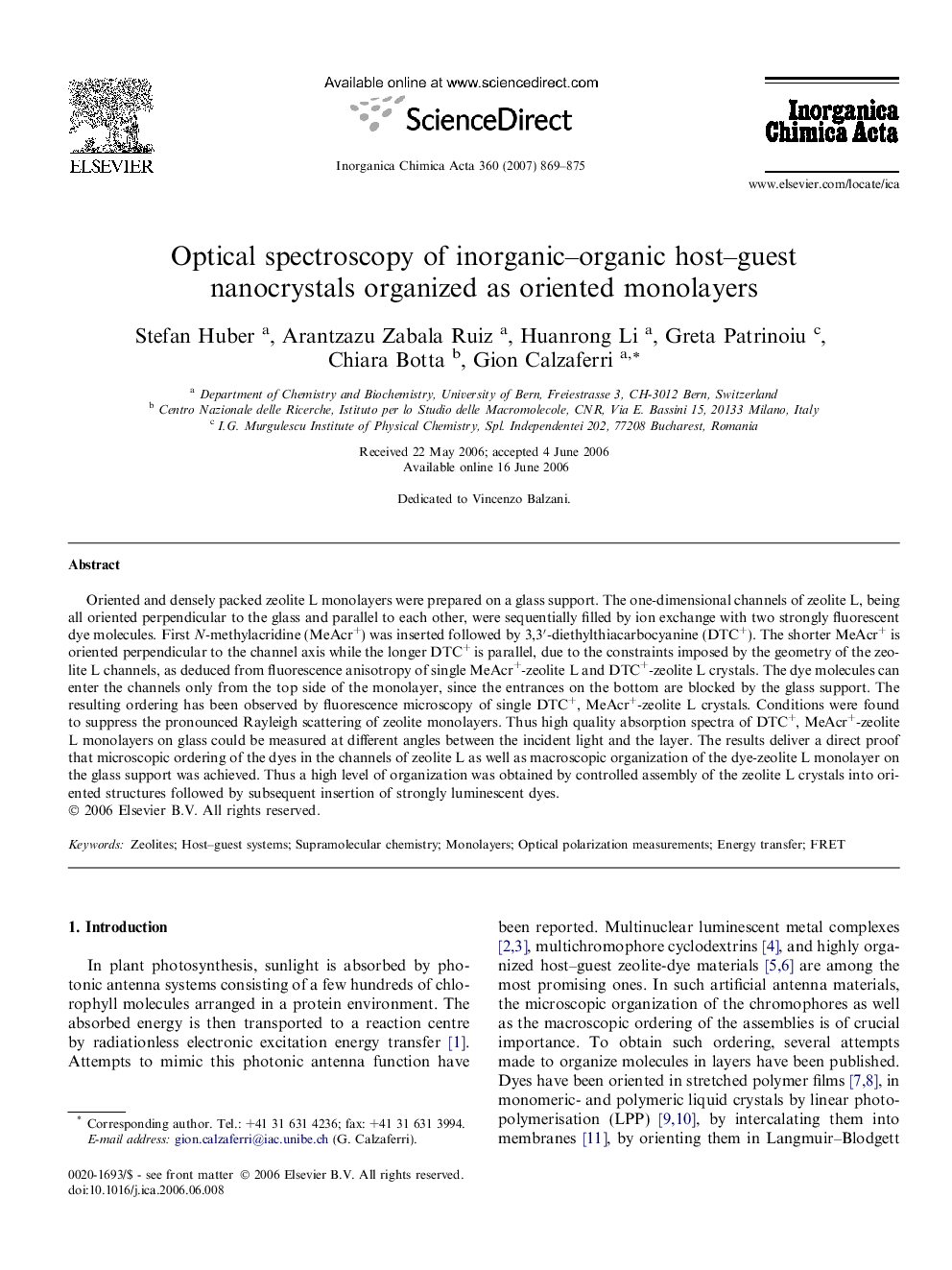| کد مقاله | کد نشریه | سال انتشار | مقاله انگلیسی | نسخه تمام متن |
|---|---|---|---|---|
| 1312763 | 975497 | 2007 | 7 صفحه PDF | دانلود رایگان |

Oriented and densely packed zeolite L monolayers were prepared on a glass support. The one-dimensional channels of zeolite L, being all oriented perpendicular to the glass and parallel to each other, were sequentially filled by ion exchange with two strongly fluorescent dye molecules. First N-methylacridine (MeAcr+) was inserted followed by 3,3′-diethylthiacarbocyanine (DTC+). The shorter MeAcr+ is oriented perpendicular to the channel axis while the longer DTC+ is parallel, due to the constraints imposed by the geometry of the zeolite L channels, as deduced from fluorescence anisotropy of single MeAcr+-zeolite L and DTC+-zeolite L crystals. The dye molecules can enter the channels only from the top side of the monolayer, since the entrances on the bottom are blocked by the glass support. The resulting ordering has been observed by fluorescence microscopy of single DTC+, MeAcr+-zeolite L crystals. Conditions were found to suppress the pronounced Rayleigh scattering of zeolite monolayers. Thus high quality absorption spectra of DTC+, MeAcr+-zeolite L monolayers on glass could be measured at different angles between the incident light and the layer. The results deliver a direct proof that microscopic ordering of the dyes in the channels of zeolite L as well as macroscopic organization of the dye-zeolite L monolayer on the glass support was achieved. Thus a high level of organization was obtained by controlled assembly of the zeolite L crystals into oriented structures followed by subsequent insertion of strongly luminescent dyes.
Oriented zeolite L monolayers were prepared on a glass support. Two fluorescent organic dye molecules were inserted into the channels. The very high degree of dye alignment was proved by optical absorption spectroscopy of the monolayers. Moreover, the dyes can only be inserted from one end of the channel, since the other is blocked by the glass. A scheme and fluorescence microscopy images of the resulting unidirectional antenna system are shown on the right.Figure optionsDownload as PowerPoint slide
Journal: Inorganica Chimica Acta - Volume 360, Issue 3, 15 February 2007, Pages 869–875